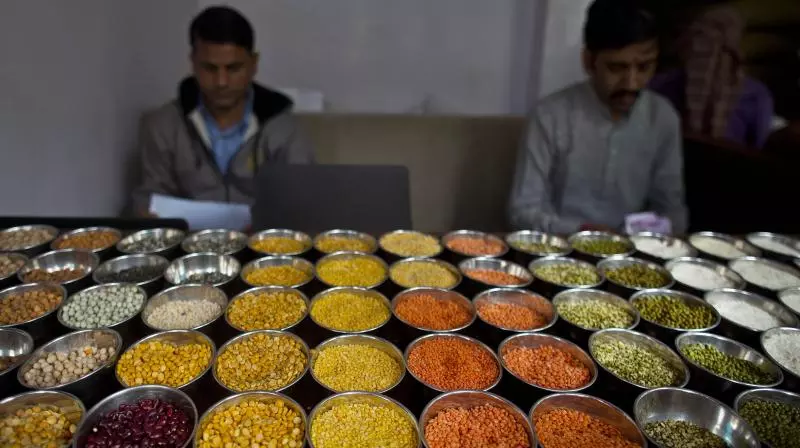Retail Inflation at 1-Year Low: Staples Drive Decline

Retail inflation in India hit a notable milestone in May, dropping to a one-year low of 4.75%. This significant decrease was primarily attributed to the declining prices of essential commodities, commonly referred to as staples. The latest figures released by the government's statistics office indicate a favorable trend in consumer prices, providing relief to households grappling with economic uncertainties amidst the ongoing pandemic.
The decline in retail inflation can be largely attributed to the easing of prices for essential items such as food and beverages, which hold substantial weight in the consumer price index (CPI). Food inflation, a key component of the CPI, witnessed a considerable moderation, contributing significantly to the overall decline in inflationary pressures. Factors such as a bumper crop harvest and improved supply chain management have played pivotal roles in stabilizing food prices, offering respite to consumers burdened by the economic fallout of the pandemic.
Amidst the prevailing economic landscape characterized by supply disruptions and subdued consumer demand, the decline in retail inflation comes as a welcome development. Cheaper staples have effectively cushioned the impact of rising fuel prices and other cost-push factors, thereby alleviating the financial strain on households. This moderation in inflationary pressures not only augurs well for consumers but also provides the central bank with room to maneuver its monetary policy stance to support economic recovery.
The significant role played by food inflation in shaping overall retail inflation underscores the importance of agricultural policies and supply chain management in maintaining price stability. Investments in agricultural infrastructure, technology adoption, and policy interventions aimed at enhancing productivity and market efficiencies can contribute to long-term price stability and food security.
Furthermore, the moderation in retail inflation is expected to have positive implications for the broader economy. Lower inflationary pressures can boost consumer confidence and purchasing power, thereby stimulating household consumption, which is a critical driver of economic growth. Additionally, subdued inflationary expectations can provide the central bank with flexibility in formulating its monetary policy framework, enabling it to prioritize growth objectives without compromising on price stability.
It is imperative for policymakers to remain vigilant and proactive in addressing potential inflationary risks stemming from domestic and external factors. While the current inflationary trajectory appears favorable, uncertainties loom large on the global economic horizon, including volatile commodity prices and supply chain disruptions. Hence, a prudent and forward-looking approach to inflation management is essential to safeguard macroeconomic stability and ensure inclusive growth.
In conclusion, the recent decline in retail inflation to a one-year low of 4.75% in May, driven by cheaper staples, marks a significant milestone in India's economic recovery journey. The easing inflationary pressures offer relief to consumers and provide policymakers with the flexibility to support growth-oriented measures. However, sustained efforts to address structural bottlenecks in agriculture and supply chain management are imperative to maintain price stability and foster inclusive growth in the long run.

